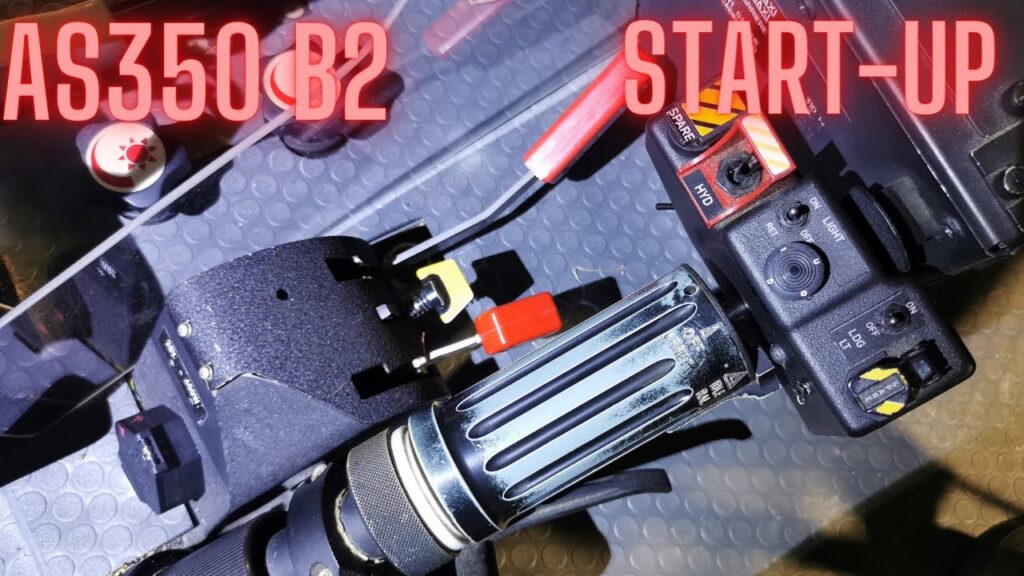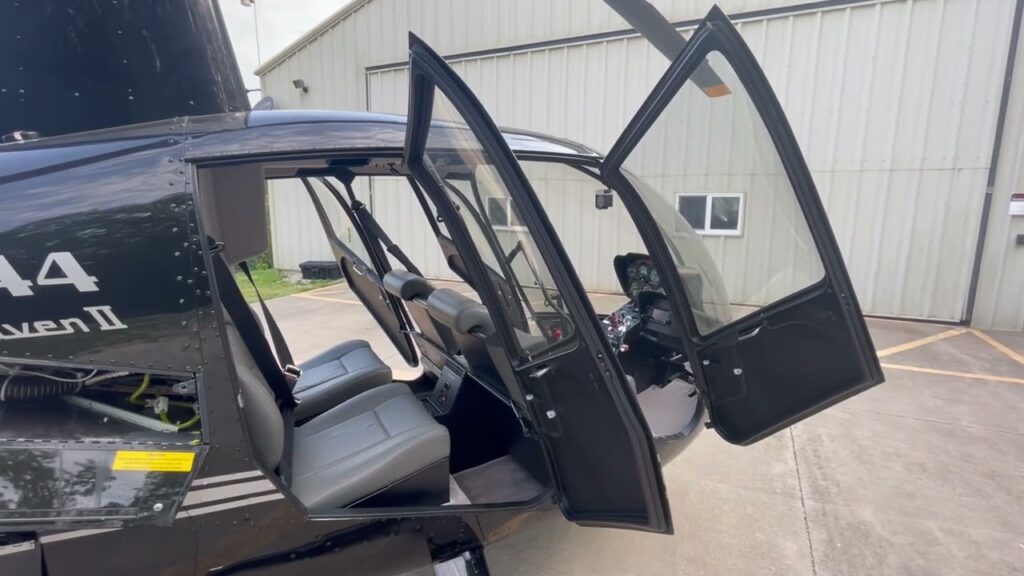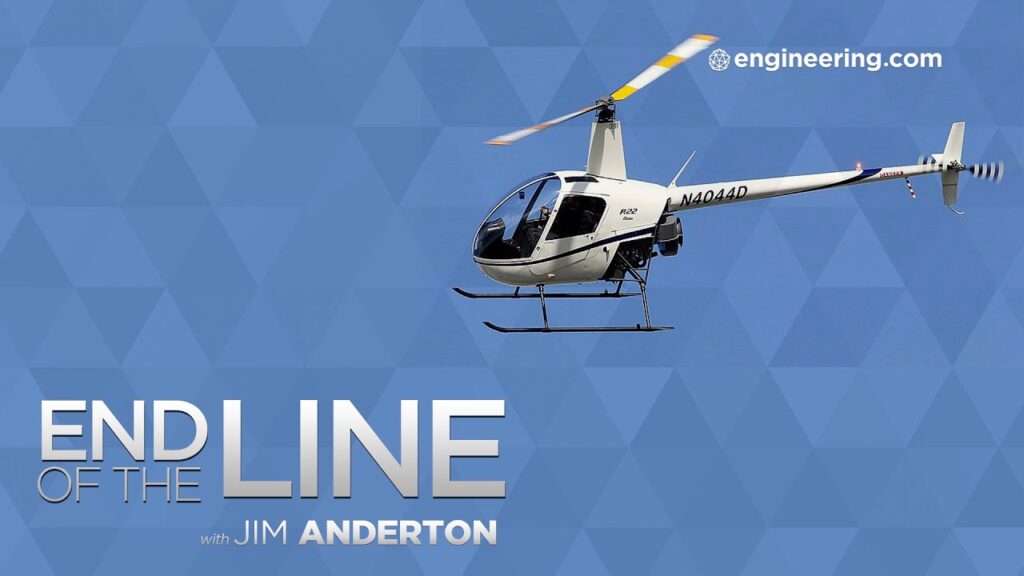The Legacy of the 1999 Eurocopter AS350B2 in Mexico’s Aviation History
The 1999 Eurocopter AS350B2 represents a significant chapter in Mexico’s aviation history, symbolizing not only a technological advancement in helicopter design but also an era of diversified utility and rugged reliability in various sectors across the country. The single-engine helicopter, known for its high-performance capabilities at high altitudes and in hot conditions, quickly became a staple for both civil and military operations throughout Mexico after its introduction at the close of the 20th century.
In the realms of civil service, the AS350B2 played a crucial role in a range of applications. Its agility and capacity for maneuvering in difficult terrains made it an ideal candidate for search and rescue missions in Mexico’s vast and often treacherous landscapes. The helicopter’s versatility allowed it to adeptly serve in other roles, too, such as medical air ambulance services, helping to save lives even in the most remote towns and villages.
Aside from emergency services, the Eurocopter AS350B2 also significantly impacted the private sector in Mexico. It was widely used for high-altitude construction tasks, including the installation of telecommunications infrastructure, which was pivotal for the nation’s development in the early digital age. Moreover, the tourism industry utilized the helicopter for sightseeing tours, offering passengers unparalleled views of Mexico’s stunning natural attractions and archeological sites from the sky.
The robust design of the AS350B2 ensured its longevity in the harsh Mexican environment. The helicopter’s ease of maintenance and durability meant that it could sustain prolonged operations in hot and dusty conditions, often associated with the Mexican landscape. Its reliability earned it a place of honor within the fleets of the Mexican Air Force and law enforcement agencies, which used the aircraft for patrols, surveillance, and to maintain public safety.
Over two decades on, the legacy of the 1999 Eurocopter AS350B2 endures in the memories and experiences of pilots, engineers, and citizens alike. Its contributions to the development and aid of Mexico are a testament to its design and engineering, reflecting the nation’s spirit of perseverance and adaptability. The AS350B2 remains an iconic image in Mexican skies, symbolizing the progress and challenges that the country’s aviation industry has faced and overcome over the years.
Exploring the Features of the 1999 Eurocopter AS350B2
The 1999 Eurocopter AS350B2, known for its versatile capabilities in the skies of Mexico, showcases a remarkable blend of power, performance, and reliability. This single-engine helicopter is esteemed for its high-altitude performance and ability to operate under challenging weather conditions, making it an ideal choice for a variety of missions ranging from law enforcement to emergency medical services.
Under the hood, the Eurocopter AS350B2 is equipped with a potent Turbomeca Arriel 1D1 engine, which delivers robust horsepower and efficient fuel consumption. The advanced engine technology enables the helicopter to reach a maximum speed of 155 knots, and a service ceiling of 16,500 feet, outperforming many competitors in its class.
The design of the AS350B2 emphasizes passenger comfort and safety. The cabin is spacious, providing seating for up to six passengers plus one pilot. The large, unobstructed windows offer panoramic views for aerial tours and surveillance operations, while the low vibration levels ensure a smooth ride. Safety features include a crash-resistant fuel system and energy-absorbing seats that are remarkable for an aircraft of this period.
Operational versatility is one of the Eurocopter AS350B2’s strong suits. With its ability to take on a variety of external loads, it has become a workhorse for utility and construction tasks. In the rugged landscapes of Mexico, its high maneuverability and powerful hydraulics are assets when performing precision work, such as erecting power lines or transporting critical supplies to remote areas.
Maintenance and servicing of the AS350B2 are facilitated by its modular design, allowing easy access to all key systems and components. This attribute not only simplifies routine checks but also reduces downtime, which is essential for operators who rely on the helicopter for daily tasks. The 1999 Eurocopter AS350B2 thus represents a blend of technological advancement and practical design, setting a benchmark for single-engine utility helicopters of its time.
Operational Uses of the 1999 Eurocopter AS350B2 in Mexican Aerial Services
The 1999 Eurocopter AS350B2, known for its high-performance capabilities and versatility, has become an indispensable component of various aerial services across Mexico. Employed by both public and private sectors, this aircraft has demonstrated its adaptability in numerous operational settings.
Search and Rescue Missions
Given Mexico’s diverse terrain, from the sprawling urban landscapes to remote mountainous regions, the AS350B2 has proven itself as a vital resource for search and rescue missions. Its agility allows for precise maneuvering in challenging environments, making it an ideal helicopter for locating and retrieving individuals in distress. The helicopter’s spacious cabin and payload capacity enable it to accommodate both rescue personnel and the necessary medical equipment, ensuring rapid response times during critical search and rescue operations.
Law Enforcement and Surveillance
The 1999 Eurocopter AS350B2 plays a crucial role in supporting law enforcement agencies in Mexico. Its ability to hover and maintain low flight speeds grants an advantage during surveillance and patrol duties, particularly in areas where ground access is limited or non-existent. Customized with advanced communication systems, the AS350B2 facilitates real-time information sharing with ground units, augmenting the effectiveness of police operations ranging from traffic control to high-stakes surveillance and border patrols.
Aerial Firefighting
Aerial firefighting is another area where the AS350B2 showcases its operational significance. With frequent wildfires in various Mexican regions, the helicopter’s capacity for carrying substantial loads of water or retardants is a game-changer in fire suppression efforts. Its precision in aerial water drops helps protect natural reserves, infrastructure, and communities from the devastation of uncontrolled fires. The helicopter’s durability and reliability under high-stress conditions have established it as a frontrunner in the fight against wildfires.
Transport and Tourism
Besides emergency and law enforcement services, the 1999 Eurocopter AS350B2 also serves a vital role in the transport and tourism industry. Its comfortable seating and exceptional viewing windows make it an attractive option for sightseeing tours, offering unparalleled aerial views of Mexico’s stunning landscapes and historical sites. Additionally, the helicopter’s transport capabilities are employed by businesses for executive travel, providing expedited and direct access to remote locations, thereby enhancing efficiency in various commercial operations.
Maintaining the 1999 Eurocopter AS350B2: Best Practices in Mexico
The 1999 Eurocopter AS350B2, known for its versatility and performance, remains a popular choice for various operations across Mexico. To ensure the safety and longevity of these helicopters, adherence to stringent maintenance procedures is critical. Operators in Mexico should ensure they follow the manufacturer’s guidelines and local aviation authority regulations to keep their aircraft in prime condition.
One of the best practices in maintaining the AS350B2 is regular and thorough inspections. In Mexico’s diverse climates and landscapes, from arid deserts to humid coastal areas, these helicopters are exposed to unique environmental stressors that can affect their components. Scheduled inspections help identify any wear and tear early, preventing minor issues from escalating into major problems or safety hazards. Investments in early detection of potential maintenance needs can significantly reduce the likelihood of costly and unscheduled downtime.
Another crucial aspect is the use of genuine parts and certified equipment during the maintenance process. In Mexico, sourcing these parts might not always be straightforward, and there can be a temptation to use non-certified substitutes. However, for the integrity and safety of the AS350B2, only OEM (Original Equipment Manufacturer) or certified aftermarket parts should be used. This ensures that all the components meet the necessary specifications and function as intended during the high demands of flight operations.
Lastly, training cannot be overlooked in the maintenance program for the 1999 Eurocopter AS350B2 in Mexico. Technicians should be up to date with the latest techniques and practices recommended by the aircraft manufacturer. Continuous professional development is not just about maintaining skill levels; it’s equally about adapting to new technologies and methods that can enhance the efficiency and effectiveness of maintenance. As aviation technology evolves, staying informed is key to maintaining these complex machines correctly and safely.
Comparing the 1999 Eurocopter AS350B2 with Modern Helicopters in Mexico
When evaluating the capabilities of the 1999 Eurocopter AS350B2 against some of the modern helicopters in Mexico, it is important to consider the advances in aviation technology that have occurred over the past two decades. The AS350B2, known for its reliability and versatility, served many operators in various roles, ranging from law enforcement and emergency medical services to executive transport and scenic flights.
Performance Enhancements
Modern helicopters incorporate more advanced engines and avionics, leading to improved performance and safety. For instance, the inclusion of FADEC (Full Authority Digital Engine Control) systems allows for more precise engine management. In contrast, the older AS350B2’s engine performance relies on more manual control and monitoring, which can be less efficient and require more pilot workload.
Avionics and Automation
Today’s helicopter cockpits are often equipped with state-of-the-art glass cockpits and integrated avionics systems that allow for superior situational awareness, navigation, and communication capabilities. The AS350B2’s analog instruments and first-generation navigation systems, while functional, do not offer the same level of information integration or ease of use that modern avionics suites provide to today’s pilots.
Comfort and Design
Helicopter design has evolved to focus more on passenger comfort and ergonomics. Modern helicopters might offer reduced vibration levels, quieter cabins, and more luxurious interior options compared to the AS350B2. Furthermore, newer models can boast enhancements like climate control systems that create a more comfortable environment for passengers and crew alike.
Safety Improvements
Safety is a paramount consideration in aviation, and modern helicopters are often designed with the latest in safety technology. Features such as crash-resistant fuel systems, advanced traffic collision avoidance systems (TCAS), and terrain awareness and warning systems (TAWS) are less likely to be found as standard in helicopters from 1999. The AS350B2, while a robust and reliable aircraft in its time, lacks some of the advanced safety features that are now common in newer helicopters operating in Mexico.



